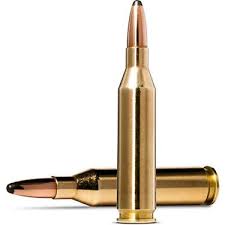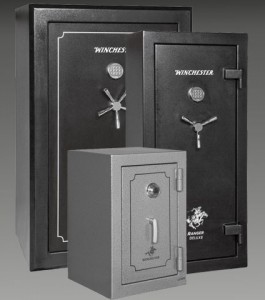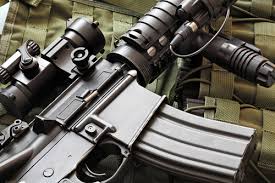About the Idaho Beginner AR-15 Class

Idaho Beginner AR-15 Class 101 teaches beginner students the significant components of the AR-15 rifle. This beginner AR-15 class introduces the AR-15 rifle, operations, shooting, Idaho Rifle Laws, and AR-15 maintenance.
Safety is always the most crucial concern when handling any firearm. This course begins teaching safety from the beginning of the class and through the training process.
Upon completion of this course, AR-15 rifle students can progress to the next level of training taught at the Idaho AR-15 Classes 102.
Introducing AR-15 Components – Idaho Beginner AR-15 Class
The training discusses the many topics that go into owning an AR-15 rifle. Notably, the Idaho Beginner AR-15 class teaches students how to maintain AR-15s and store them properly.
Parts of an AR-15
The AR-15 rifle has many moving components. There are a lot of moving parts in the AR-15 weapon. The features frequently overwhelm students attending the Idaho Beginner AR-15 students. The students in the class will understand the components of an AR-15 rifle through practical, hands-on experience.
Below are some of the AR-15 rifle components we will discuss in class.
The Charging Handle

The Charging Handle is exactly what it sounds like; it charges the AR-15 into the shooting status. When you pull the charging handle, ammunition is placed into the chamber of the barrel and the bolt assembly becomes engaged during the process. A bolt assembly is essentially a group of components that work together to operate the entire firing process.
Block or Gas Tube

This simply refers to the type of gas operation you want to power your AR-15 rifle cycle.
Many argue the Gas Piston style is cleaner than Gas Impingement systems; this is true. However, unless you are planning for the next zombie apocalypse, what does it matter? Really? Both systems will stand up to constant use when needed, the Gas Impingement system gets a little dirtier than the Gas Piston system.
AR-15 Ammunition – .223 versus .556

Ammunition is a widespread debate among all rifle enthusiasts, and the AR-15 is no exception. As with any rifle, the decision comes down to the intended use of the rifle.
The AR-15 is offered in many chamber sizes. If you are a first-time user or have teenagers in the house that you want to introduce to the shooting sport, a .22 caliber rifle may be a good choice. Adults will find themselves getting bored, with an AR-15 chambered in a .22 caliber; they’re just not that fun to shoot.
Moving up in size, you may get AR-15 rifles in the .223 and .556 calibers. The .556 AR-15 is more suited for the first-time buyer. The benefit you receive is the ability to shoot .223 out of the same rifle. This provides more flexibility, allowing one to choose which caliber to shoot.
Choose a Popular AR-15 Format
We recommend your first AR-15 rifle should be the .556 caliber. This allows the beginner student to shoot .556 ammo and .223, which is less expensive. Don’t risk severe harm or death by firing .556 ammunition from a .223 rifle.
The price of an AR-15 can be costly for the first-time buyer. This is why we recommend a rifle that can handle two different calibers. Shoot .223 ammo for fun and the .556 ammo for distance and more stopping power.
Keep Idaho Rifles Secured At All Times

You hear it all the time, you see it in the NEWS almost every day – a mass shooting takes place. Blame the guns, and take them away; it’s for everyone’s safety.
The truth is, if we allow the government to take away our guns, then only criminals will be armed. It is every gun owner’s responsibility to keep their weapons secure.
Safe gun storage is everyone’s responsibility.
To prevent the theft of your firearms, it is reasonable and responsible to have them secured in a safe. This means we must always keep them in a safe, locked, and secured from unauthorized access or theft.
This Is A Two Training Event!
Why is this a 2-day course? Our Idaho Beginner AR-15 class is the best training you will receive in Idaho, there are no shortcuts in learning how to properly own and use a rifle.
Where Training Meets Technology, we train using Modern Gun Training Techniques which all but ensures you will know everything you need to know by the end of class. We want you to be completely trained when handling a firearm.
Indoor ranges in Idaho do not accommodate outside instructors which makes no sense – we are literally bringing them, customers! We have chosen to utilize one of the several outdoor ranges in the Treasure Valley who appreciate us bringing them, customers.
Indoor ranges are loud, really loud. You cannot hear the instructor while training and are extremely restrictive with what we can teach.
Outdoor ranges provide freedom of teaching without the loud distraction you experience when training in an indoor range. We can take our time training – there’s no rush – you’re not paying a lot of money per hour, students can hear us, there are little to no distractions, and there’s no need to rush you through the skill-building portion of class. You learn in a safe, comfortable, and fairly quiet environment.
Outdoor ranges in Idaho are extremely hot or cold in the late afternoons which distracts new students from concentrating.
Idaho Beginner AR-15 Class Prerequisites:
NONE
Adherence to the primary safety rules must always be followed.
- Keep the Firearm Pointed in a Safe Direction.
- Keep the Firearm Unloaded Until Ready to Use.
- Keep Your Finger Off The Trigger Until Ready to Shoot.
- Know Your Target and Beyond.
- No Drugs, Alcohol, nor Cannabis are Allowed At The Range.
Idaho Beginner AR-15 Class Schedule:
Classroom – Saturday
What to Bring:
- A personal AR-15 rifle of any caliber, cased, secured, and free of ammunition.
- Bi-pod mount.
If you do not own an AR-15 rifle, we recommend taking this course before purchasing one. Rifle rentals are available, including ammunition, during check-out.
- Rifle Case: Preferably lockable for transportation purposes.
- Training Cartridges (Dummy Rounds): At least 5 Training Cartridges in the correct caliber are needed for this class.
- Can be found at local sporting goods stores or online.
- Two-Point Rifle Sling
- Additional Magazine.
Estimated Class Time: 6 Hours
Range Day: Sunday
- A personal AR-15 rifle of any caliber, cased, secured, and free of ammunition.
- Bi-pod mount.
- Rifle Case: Preferably lockable for transportation purposes.
- Range Fees, if any, are the student’s responsibility and are not included with the course registration.
- Training Cartridges (Dummy Rounds): At least 5 Training Cartridges in the correct caliber are needed for this class.
- Can be found at local sporting goods stores or online.
- Two-Point Rifle Sling
- Additional Magazine.
- Suitable Eye Protection. This can be wraparound eyewear, polycarbonate lenses, or non-shattering prescription glasses.
- Suitable Ear Protection. We recommend electronic noise-canceling earmuffs, but earplugs are acceptable.
- Knee and Elbow Pads – for range day and private shooting drills afterward.
- Ground Covering for Prone Shooting Positions
- Check the weather report on the day of class and bring appropriate clothing.
- Sunscreen or jackets when needed.
- Beverages for Hydration.
- Wear appropriate clothing for the weather.
- Bug spray for the critters
- No V-neck or similar shirts.
- Suitable and Comfortable Footwear, no open-toed shoes are allowed.
- Bring snacks for breaks. Snacks – Are allowed at the range – snacks are not allowed on the firing line.
Ammunition
- 100 Rounds of Factory-fresh Ammunition.
Additional Information
- Lead core ammunition is used on steel only.
- No green/brown tip or armor-piercing ammunition is allowed.
- Note: Use of reloaded or steel-core ammunition will cause immediate failure and expulsion from class.
Optional but highly recommended:
- Knee Pads – for range day and private shooting drills afterward.
- Folding chair and a small folding table to create your own workstation (bench).
Estimated Length: 6 Hours
Benefits of Continued Training

Learning the basics of AR-15 rifle shooting is the first step to understanding your rifle, and how to handle it safely, shoot, maintain, and safely store it securely, but, there’s much more to be learned.
Your next step on the path of AR-15 rifle skill development is to come back for our Idaho AR-15 Classes 102, which focuses on how to shoot more accurately. You spend less time in the classroom and more time at the range training.
Idaho Rifle Essentials 102 introduces and focuses beyond fixed iron sites by introducing AR-15 rifle scopes and accessories. Similar to our Idaho AR-15 Essentials 101 class, the AR-15 Rifle Classes 102 Builds on your newfound skills.
Level 1 Firearms Training offers classes in pistol, shotgun, and concealed carry.
